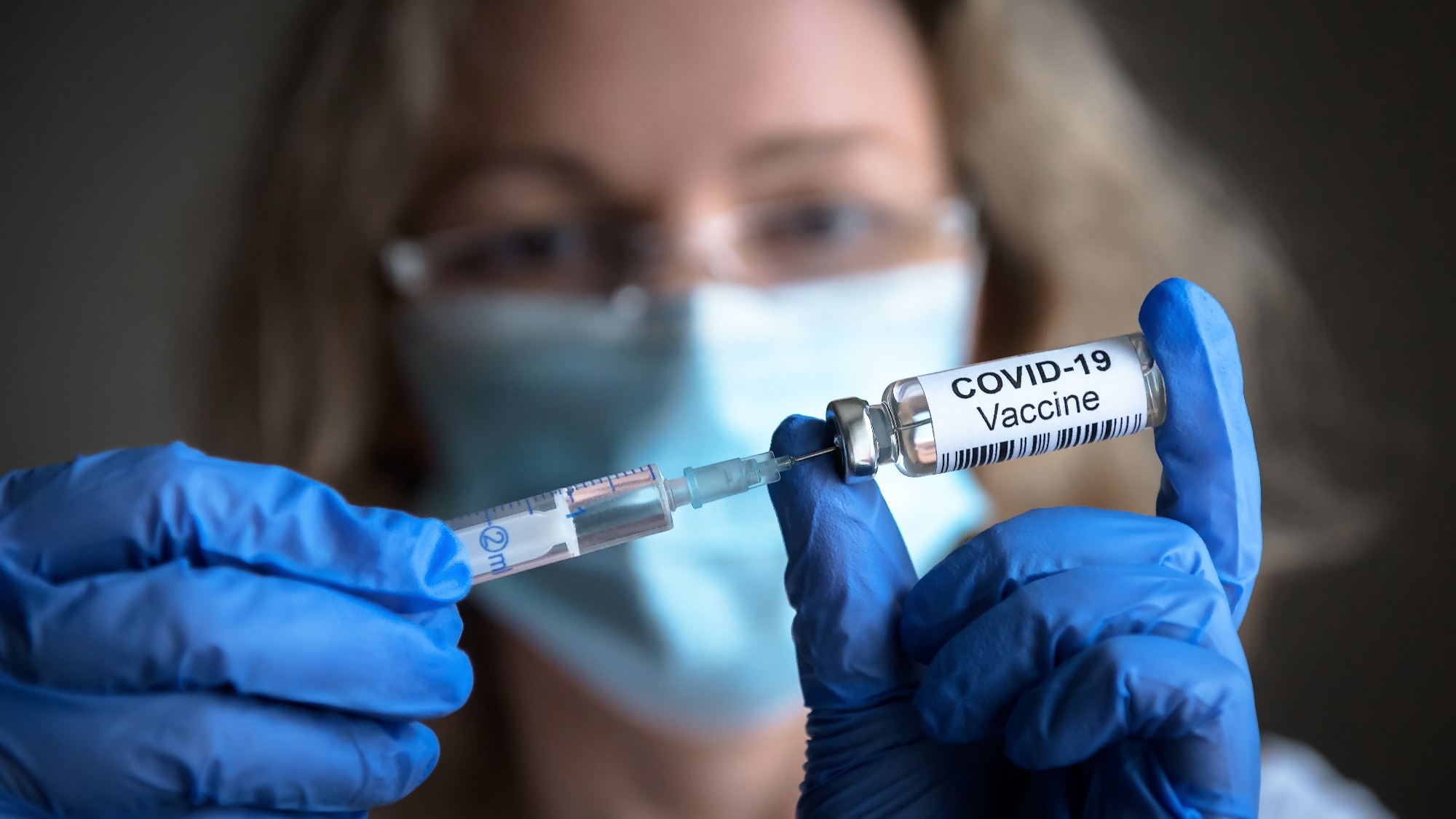In a recent study posted in the bioRxiv* preprint server, researchers explored the protective systemic and mucosal immunity provided by a single dose of a live-attenuated severe acute respiratory syndrome coronavirus 2 (SARS-CoV-2) vaccine candidate.
 Study: A single-dose of intranasal vaccination with a live-attenuated SARS-CoV-2 vaccine candidate promotes protective mucosal and systemic immunity. Image Credit: Viacheslav Lopatin/Shutterstock.com
Study: A single-dose of intranasal vaccination with a live-attenuated SARS-CoV-2 vaccine candidate promotes protective mucosal and systemic immunity. Image Credit: Viacheslav Lopatin/Shutterstock.com

 *Important notice: bioRxiv publishes preliminary scientific reports that are not peer-reviewed and, therefore, should not be regarded as conclusive, guide clinical practice/health-related behavior, or treated as established information.
*Important notice: bioRxiv publishes preliminary scientific reports that are not peer-reviewed and, therefore, should not be regarded as conclusive, guide clinical practice/health-related behavior, or treated as established information.
Background
The coronavirus disease 2019 (COVID-19) pandemic has led to widespread morbidity and mortality across the globe. A total of four vaccines have been permitted to be used as emergency use authorization (EUA) by the Food and Drug Administration (FDA).
While these vaccines are highly protective against severe COVID-19, their effectiveness has been challenged by emerging variants of concern (VOCs), characterized by higher viral transmissibility and effective immune evasion. Extension research is needed to improve present vaccine platforms and to provide more effective vaccines.
About the study
In the present study, researchers reported that a single-dose vaccination of a ∆3678 SARS-CoV-2 vaccine candidate protected mice from a SARS-CoV-2 challenge.
The team immunized K18-human angiotensin-converting enzyme 2 (hACE2) mice intranasally (i.n.) using 2×103 plaque-forming units (PFU) of the ∆3678 viruses. SARS-CoV-2 wildtype (WT)-infected or phosphate-buffered saline (PBS)-inoculated mice were employed as controls.
At 28 days post-vaccination (DPV), the team obtained blood, lung, spleen, and bronchoalveolar lavage (BAL) samples to assess immune responses induced by the virus. The protective effects of the ∆3678 mutant were examined by exposing the vaccinated mice to 104 PFU of the WT strain virus on 28 DPV.
The team also exposed the mice to the SARS-CoV-2 Omicron BA.5 subvariant to examine the protective effectiveness against a variant with lower antibody neutralization vulnerability than prior variants.
Results
The study showed that all ∆3678 virus- or PBS-vaccinated animals survived 28 DPV and revealed neither clinical symptoms nor weight loss. However, 7.6% of the WT-infected animals inoculated with the same dose died within seven and 12 DPV. Also, almost one-third of the WT-infected mice displayed weight loss after seven DPV.
In the lung samples, WT and ∆3678 virus-infected mice had a Th1-prone immune reaction. CD4 + T cells obtained from the ∆3678-immunized mice had a higher or comparable proportion of interferon (IFN+) production than the WT virus cohort. This was suggested by the percentage and total cell number elevation; on the other hand, CD8+ IFNγ+ T cells revealed an improvement in percentage and total cell number.
Furthermore, WT and ∆3678 exposures stimulated high RBD-specific immunoglobulin (Ig)-A+ B cell responses, while the latter cohort displayed a 25% lower response. Similar proportions of SARS-CoV-2- specific IgG or IgA antibodies were identified in the BAL fluid samples of the ∆3678 and WT cohorts.
In the WT- and ∆3678-exposed mice, the team also noted Th1-prone immune responses in the spleen. CD4 + IFNγ+ T cells detected in the ∆3678-vaccinated mice revealed comparable cell numbers as those in the WT virus cohort with a decline in the percentage, while ∆3678 CD8 + T cells resulted in IFNγ levels similar to those in the WT virus concerning percentage and total cell number.
Additionally, WT and ∆3678 viruses elicited robust SARS-CoV-2-specific IgG and Th1-prone IgG2c in the serum samples, with no variations observed in antibody titers between the two cohorts.
The team also noted that mice with prior WT or ∆3678 virus inoculation survived the infection, while four out of nine PBS-vaccinated animals died between seven and nine days after the challenge.
Mice immunized with either strain reported no weight loss post-challenge, while naïve mice reported a loss of up to 20% of body weight by day seven post-challenge.
Mice with prior WT or ∆3678 virus inoculation revealed no detectable virus in their trachea or lung samples on days two and four and remarkably reduced viral loads within nasal washes at two days post-challenge.
Interestingly, none of the ∆3678-vaccinated mice reported detectable viruses in the trachea or lung samples two days post-challenge, while the naïve mice revealed viral loads of more than 106 PFU/g lung tissue.
Therefore, ∆3678 mutant vaccination provided equivalent protective effectiveness as the WT virus against future WT virus or variant exposure in mice.
Conclusion
The study findings showed that the ∆3678 SARS-CoV-2 vaccine highly protected K18-hACE2 mice. A single-dose vaccination with ∆3678 protected from WT and variant challenge by inducing SARS-CoV-2-specific systemic and mucosal humoral and cell-mediated immune responses.
The study also showed that mucosal administration of the live-attenuated vaccine promoted the development and functional activation of pulmonary cells. Therefore, the team believes that the ∆3678 viruses can be an effective candidate for future vaccinations, leading to improved and/or robust immunity in the respiratory tracts.

 *Important notice: bioRxiv publishes preliminary scientific reports that are not peer-reviewed and, therefore, should not be regarded as conclusive, guide clinical practice/health-related behavior, or treated as established information.
*Important notice: bioRxiv publishes preliminary scientific reports that are not peer-reviewed and, therefore, should not be regarded as conclusive, guide clinical practice/health-related behavior, or treated as established information.